
This story was produced by Lyft and reviewed and distributed by Stacker Media.
The best cities for commuters
When people say, "It's not about the destination, it's about the journey," they probably aren't talking about commuting. But, believe it or not, some commutes are worth savoring. In fact, some cities have made commuting downright enjoyable—or at least relatively painless.
What makes for a great commute? Lyft surveyed over 1,400 commuters to see what they value most. A full 25% said that time was the most important factor, 19% called out consistency, and 13% pointed to cost.
Data across millions of Lyft rides was analyzed supplemented by public data sources, to see where travelers enjoyed the shortest, cheapest, and greenest commutes, as well as the most vibrant downtowns to reward their travels. (To compare big apples to big apples, Lyft limited the data set to 35 cities in the U.S. with populations over 500,000.) Those scores were then combined to give each city a final, overall score. (See methodology section for more details.)
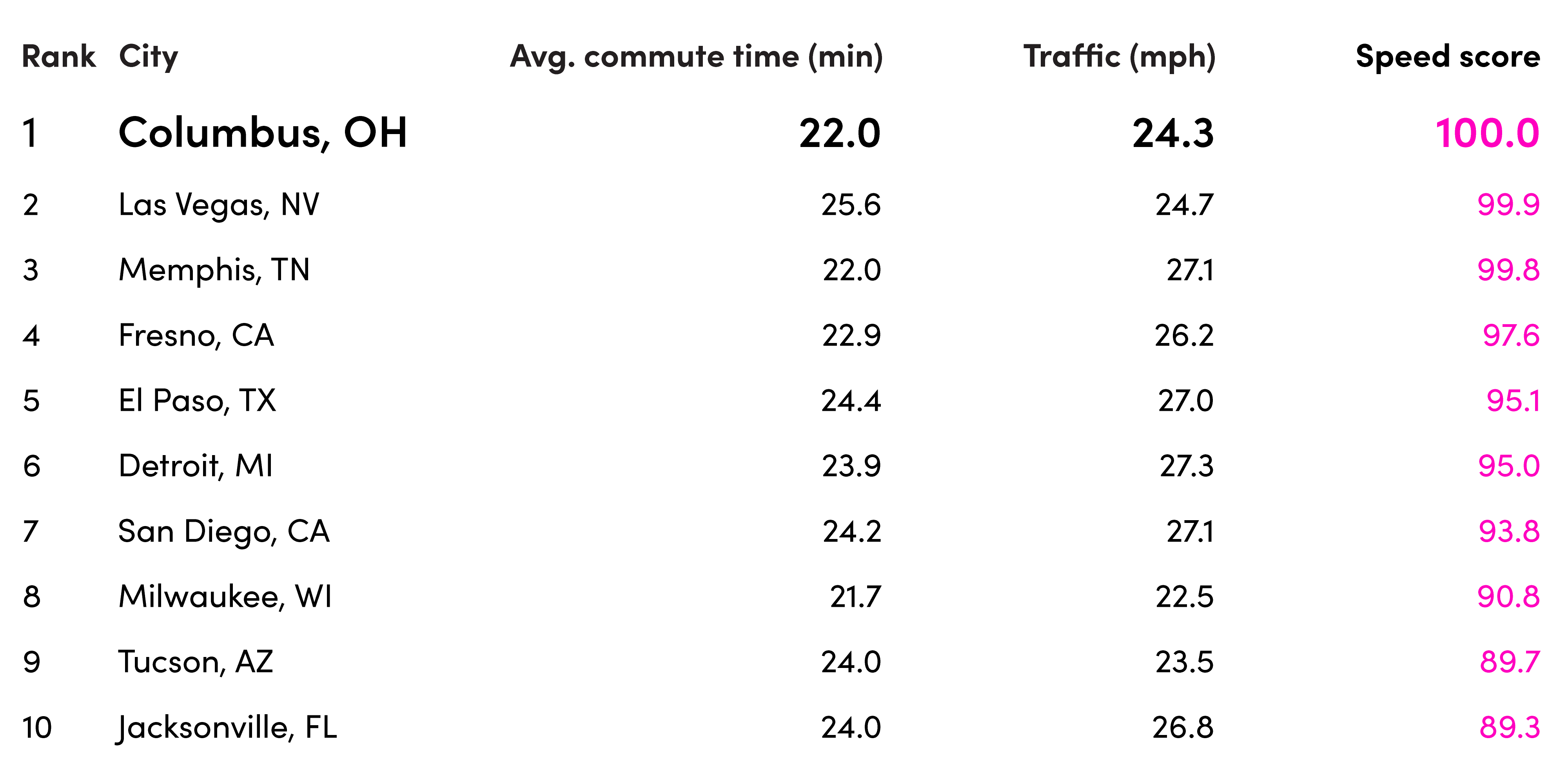
Quickest commutes
In a country where the typical employee spends more than a quarter of their day working, maximizing free time—and minimizing commute time—matters. The cities below offer some of the shortest commutes in America.
Shortest commute time: On average, commuters spend about 25 minutes getting to/from work. But some cities, notably Columbus, Memphis, and Milwaukee have some of the fastest commutes, at around 22 minutes. Over the course of a year, this difference adds up to 13 hours.
Fastest commutes: But not all minutes are created equal. Ten minutes spent cruising on a highway is less painful than ten minutes spent bumper-to-bumper. According to Lyft's data, commuters in Fort Worth, Memphis, and Detroit average over 27 mph, 4 mph faster than the average.
Least-congested commutes: The most notorious commutes aren't just slow—they are much slower than non-commute travel along the same route. As Eric Bourassa, director of transportation at Boston's Metropolitan Area Planning Council (MAPC) puts it: "On a Saturday night, it might take you 20 minutes to get home, but on a Friday afternoon, it might take you six times as long. People feel that." Only two cities do not experience slower travel during commuting hours, according to Lyft data: Columbus (1.3% faster) and Las Vegas (6.3% faster). Overall, cities experience 8% slower travel, on average.
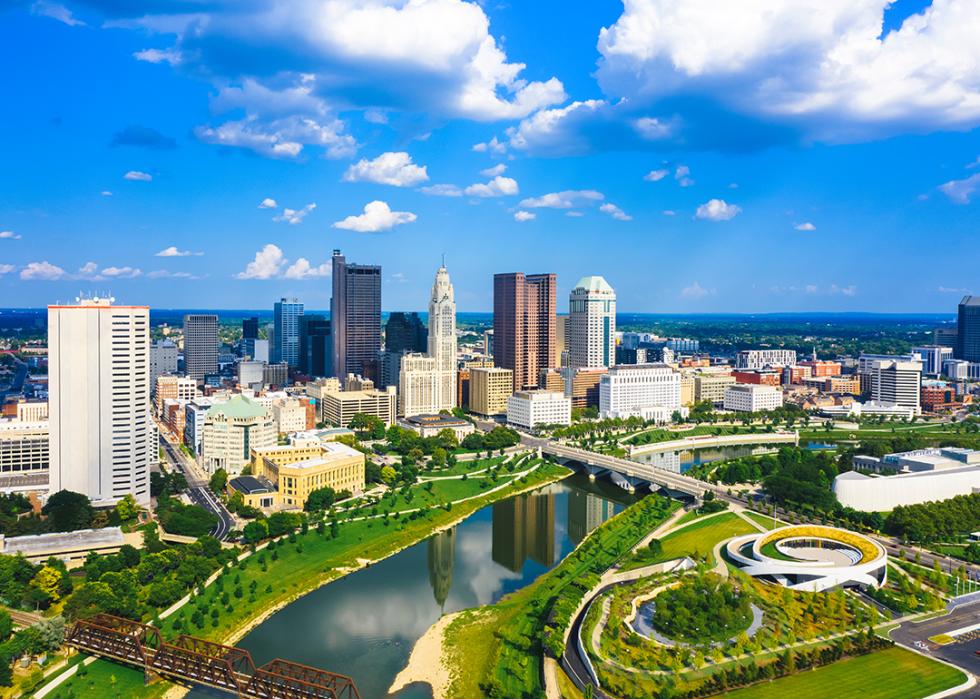
And the winner is: Columbus, Ohio
With an average commute of about 22 minutes and roads that don't experience slower traffic during peak commuting hours, Columbus is the best city for those who prize a quick commute.
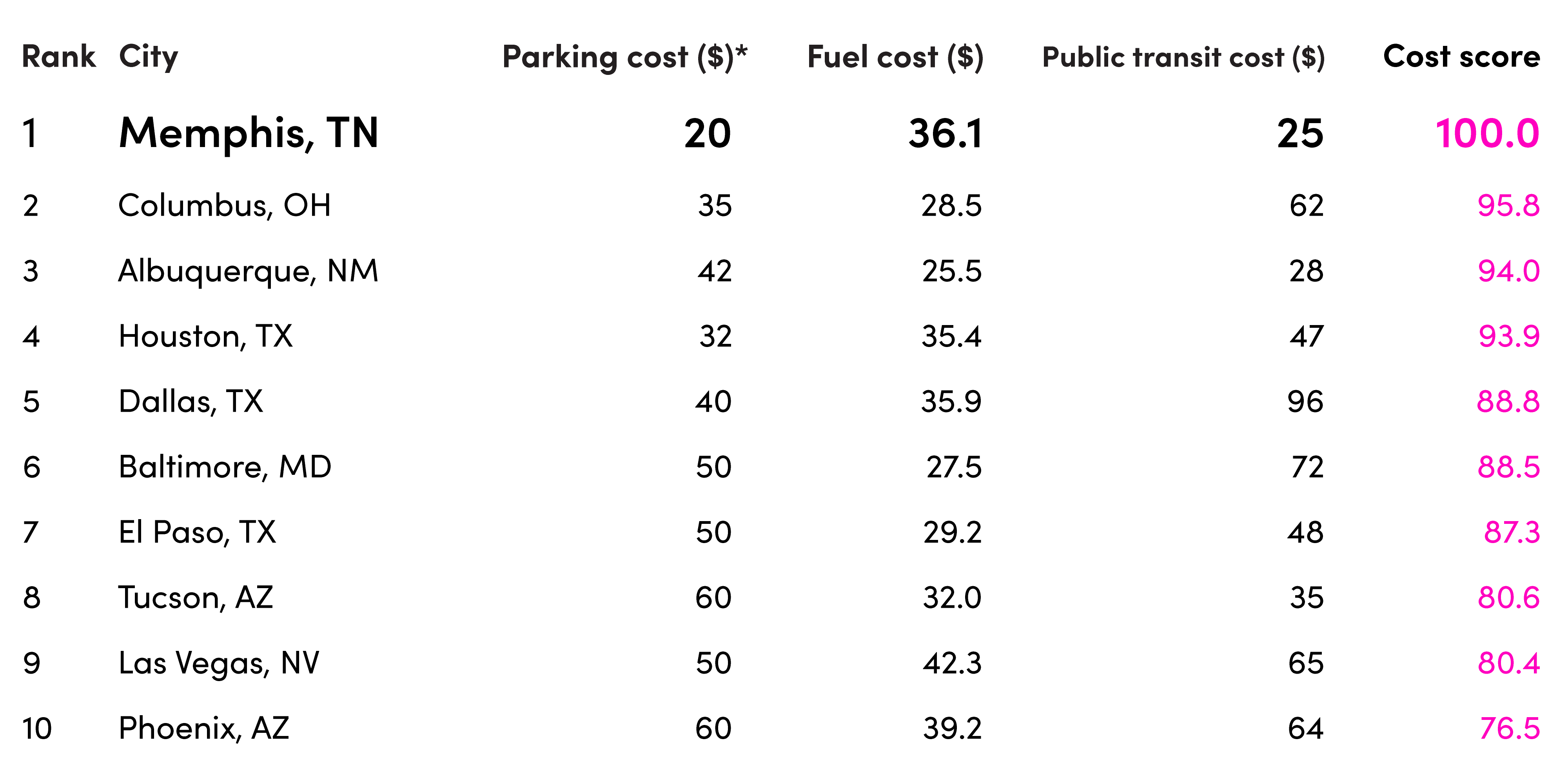
Cheapest commutes
Commutes don't just cost time, they cost money: Tolls and parking can be significant expenses for the 68.7% of Americans who commute to work alone in a vehicle each day. And for the small share of Americans who take public transit to work, fares can add up as well. According to the Consumer Expenditure Survey, administered by the Bureau of Labor Statistics, in 2022, individual households in the U.S. spent $12,295 on transportation—about 17% of all household expenditures (second only to housing).
Cheapest parking: According to SpotHero, New York City is the priciest place to park in the country—costing at least $350 a month. But in lower-density cities like Memphis, Columbus, and Houston, the expense is often under $40 a month.
Lowest fuel costs: Multiplying regional gas prices with the average length (in miles) of a commute in that region, Lyft estimates that the average monthly cost of gas for commuting is Albuquerque's $34; Milwaukee comes in on the low end ($25 and under), and San Jose and San Diego are among the most expensive, at $50.
Cheapest public transit: On average, commuting via public transit costs around $70 a month. Once again, New York City is at the high end ($132), while smaller cities like Memphis ($25) and Albuquerque ($28) are at the low end (this data was collected before Albuquerque eliminated its transit fares entirely in late 2023). It's worth noting, however, that the cost of public transit often correlates with the quality of the service (e.g., it takes nearly twice as long to commute by public transit in Memphis than in New York).
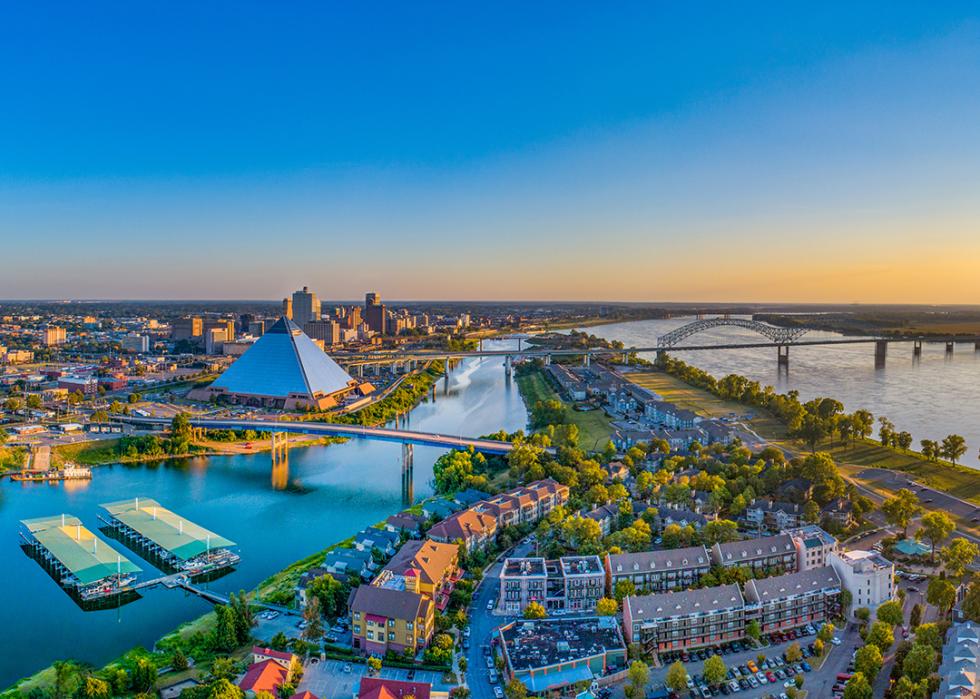
And the winner is: Memphis, TN
From inexpensive parking to low public transit costs, Memphis delivers the most affordable commute options.
Cleanest commutes
In the U.S., transportation is the largest contributor to greenhouse gas emissions. And commutes are a big part of that: An average 15-mile commute in a private vehicle can lead to, roughly, an additional two to six tons of CO2 emissions each year. Overall, people who live in (and take advantage of) cities that offer alternatives to driving a personal vehicle—biking, walking, public transit, etc.—have dramatically lower carbon footprints.
Most bike-friendly: San Francisco leads in the share of commuters who bike to work (over 3%), likely due to its favorable weather conditions and strong biking culture and infrastructure. Plus, Lyft-operated Bay Wheels is responsible for nearly 200,000 trips a month.
Most carpoolers: On average, roughly 9% of people carpool to work, but this percentage is highest in southwest cities, like El Paso, San Antonio, and Las Vegas. Why? In Texas, it may be due to the large number of HOV lanes that incentivize driving with another passenger to avoid tolls.
Most walkers: On average, only 3% of Americans walk to work. But given that college towns tend to have the highest share of walking commuters, it's no surprise that Boston—home to 44 institutions of higher learning—overperforms. A full 13% of commuters there walk to work.
Most-used public transit: Most New Yorkers agree: The best way to get around the city is the subway, which operates 24 hours a day, 7 days a week. While an average of 3% of commuters nationwide take public transit, New York clocks in at a whopping 43%.
Fewest drivers: Overall, about three-quarters of Americans drive a private fuel-based vehicle to work. But in some cities—like, again, New York, Boston, and San Francisco—the plurality of commuters choose not to drive. According to Bourassa, this makes sense: It's easier to avoid car use "in cities that were established before the automobile." Driving EVs (which people most commonly use in the Californian cities of San Jose, San Francisco, and San Diego) can substantially reduce the impact of driving, so Lyft removed EV miles traveled from its calculations.
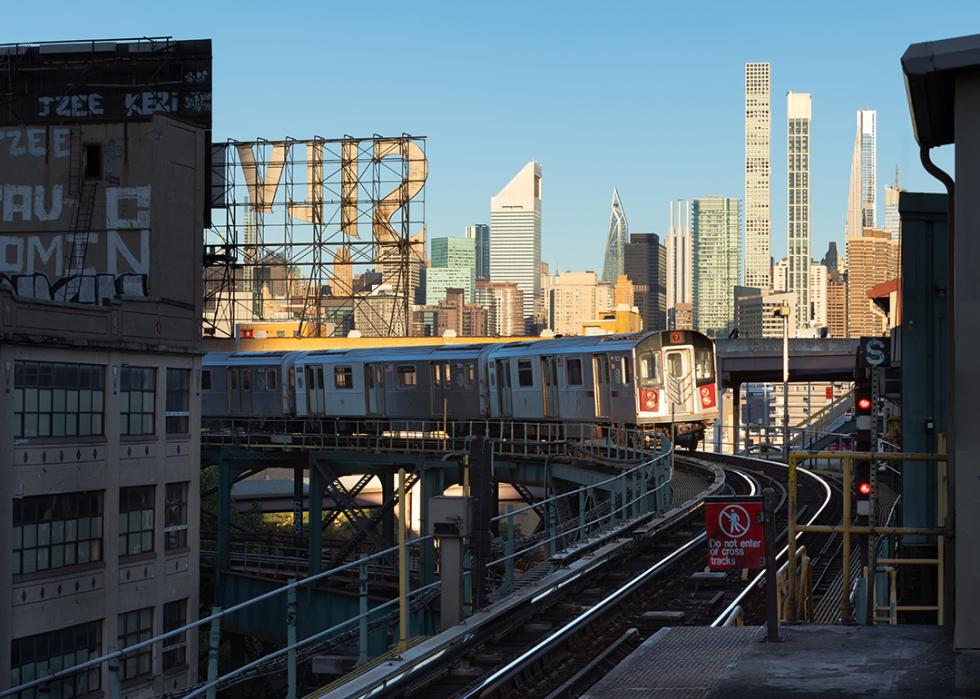
And the winner is: New York, NY
With 43% of commuters opting for public transit, NYC provides environmentally friendly commutes.
Most vibrant downtowns
Thinking beyond the literal journey, what might make a commute better? In this last section, Lyft looks at the cities with the most vibrant downtowns—as indicated by the presence of bars and shops—that draw people to work and, just maybe, convince them to stay a while.
Busiest downtowns: COVID took a toll on almost all city downtowns, and many have not fully recovered, leading to vacant storefronts and empty streets that are less enticing to the daily commuter. But according to Lyft data, in cities like Columbus and Baltimore, the recovery in downtown activity now exceeds 2019 levels.
Most bustling happy hours: Let's be honest—what really makes going to the office worth it? The likelihood of getting a drink and gossiping with your friends or coworkers afterward. And in Washington, D.C., New York, and San Francisco, people are pretty darn likely—40% more than average, according to Lyft data—to go to a bar or restaurant after work.
Busiest shoppers: Beyond happy hour, the possibility of doing some shopping after work can make a commuter's trip downtown worth it. Lyft data suggests that the retail-rich cities of San Francisco and New York are most likely to entice commuters.
Green space: Taking a walk in a park before or after work can also add to a downtown's attractiveness, so Lyft included how much land in a city is devoted to green space as a metric.
Vacancy rates: Empty offices suggest a less lively downtown, so Lyft gave a city's vacancy rate a negative value when adding all the results together to calculate each city's vibrancy scores.
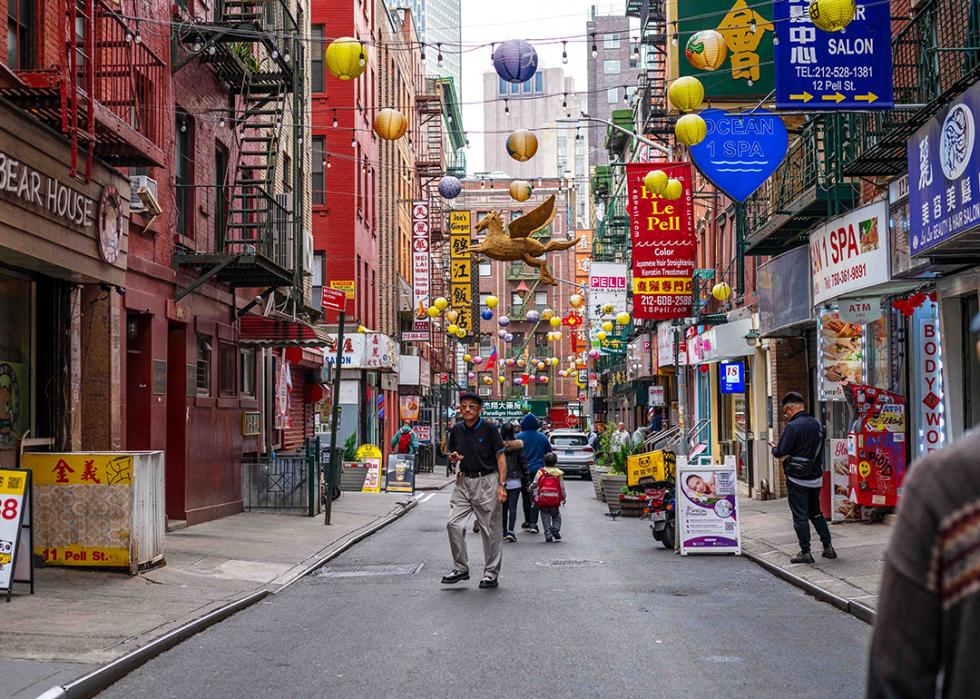
And the winner is: New York, NY
It's hard to top NYC when it comes to vibrant central business districts packed with bars, restaurants and retail offerings.

Best commutes
Considering all four measures, the very best city for commuters is Columbus, Ohio due to its speedy, cheap commutes to a booming downtown.
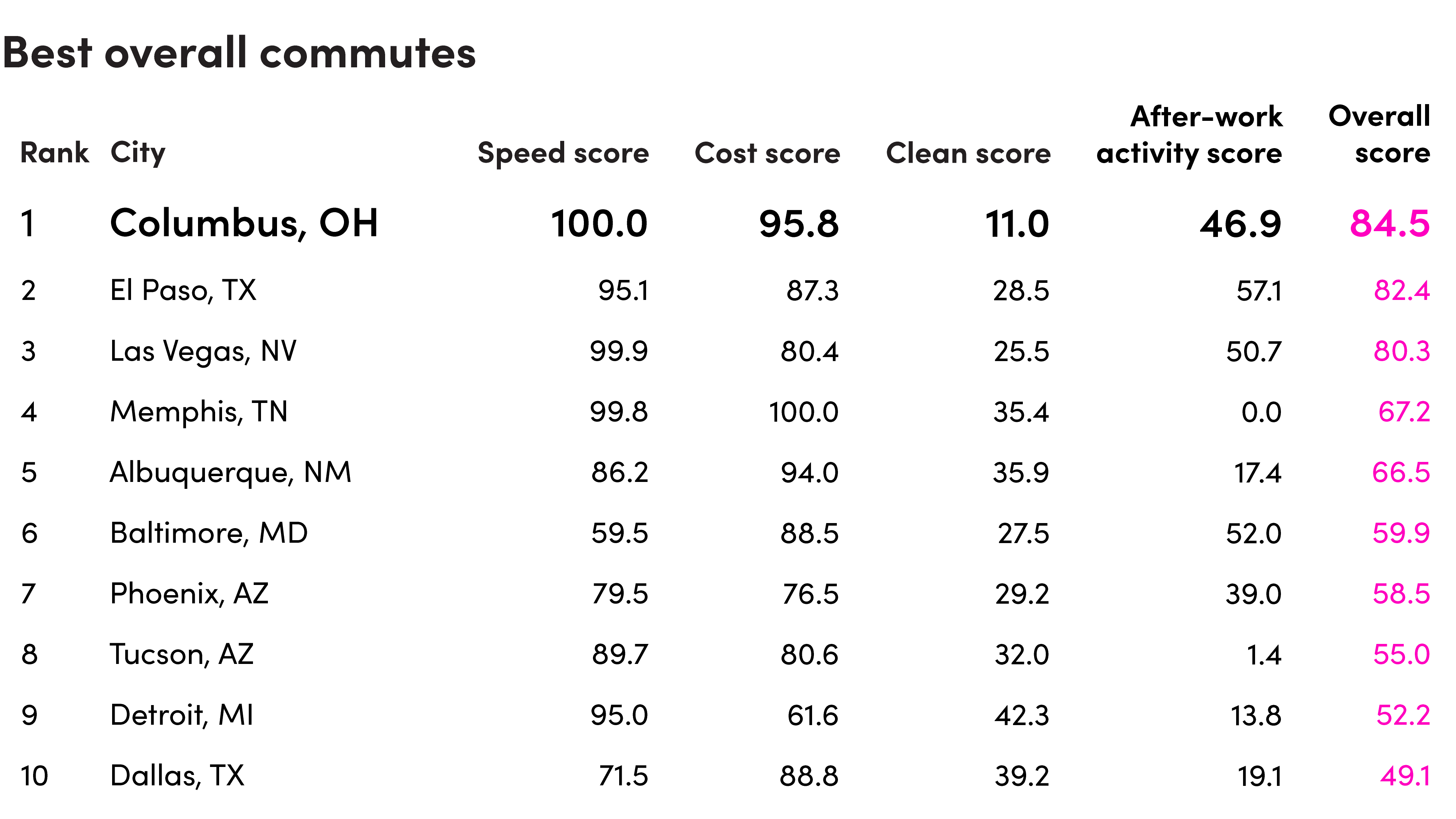
Methodology
- The commuter survey was conducted online within the United States by The Harris Poll from August 22 through August 26, 2024. A representative sample of 1,404 respondents aged 18+ completed the survey. All respondents had to regularly commute to work (via personal driving, carpool, public transportation, rideshare, etc.) to qualify.
- Average commute time (minutes) is calculated using the 2022 American Census Survey, as the average time it takes for a working person to commute in minutes.
- Traffic (mph) is calculated using Lyft data, as the average speed for rides to/from office and work destinations during commuting hours (6 a.m. to 10 a.m. and 4 p.m. to 8 p.m.), from August 2023 to August 2024.
- Congestion during commuting hours (% change) is calculated using Lyft data, as the percent change in average speed for rides to/from office and work destinations during commuting hours, relative to average speed for non-commuting rides, from August 2023 to August 2024.
- Speed score is a sum of (negative) average commute time, traffic (mph), and congestion during commuting hours (percent change), after each measure has been standardized to have a standard deviation of 1 and a mean of 0.
- Monthly parking cost ($) is estimated using SpotHero (following Finn 2023), where we took the lowest monthly parking price for each city, starting in August 2024.
- Monthly fuel cost ($) is estimated using EIA data as of August 4, 2024. For cities without city-level data, we used the region's average fuel cost. Following Brookings' (2011) strategy, we multiplied that number by the average miles for a commute to an office or work destination (Lyft data) and divided by mpg for the average 2024 vehicle.
- Monthly public transit cost ($) is the cost of a monthly pass for public transit (streetcar, bus, light and heavy rail, etc.) in each city. Source: American Public Transportation Association (APTA) 2022, by way of Coast.
- Cost score is the average cost of driving and using public transit for each city, weighted by the share of commuters who commute that way, and then standardized to have a standard deviation of 1 and a mean of 0.
- Bike to work is calculated using the Census Bureau's 2022 American Community Survey (ACS) as the share of commuting residents who bike to work.
- Carpool to work is calculated using the ACS 2022 as the share of commuting residents who carpool to work.
- Walk to work is calculated using the ACS 2022 as the share of commuting residents who walk to work.
- Public transit to work is calculated using the ACS 2022 as the share of commuting residents who take public transit (bus, light rail, train) to work.
- Drive a fuel car to work is the share of commuters who drive to work, calculated using the ACS 2022, multiplied by the share of miles driven in non-electric vehicles (data from Replica, weighted by population to get to city-level data).
- Environmental score is the sum of the percentages of people who bike, carpool, walk, take public transit, and drive a fuel car (negative) to work, after each measure has been standardized to have a standard deviation of 1 and a mean of 0.
- Downtown rebound is calculated using Lyft data, as the ratio of average monthly rides to a city's downtown (January 2024 to August 2024) relative to the average monthly rides to the downtown in 2019.
- Likelihood of happy hour is calculated using Lyft data from August 2023 to August 2024, as the rate of going to a restaurant or happy hour after the office, relative to the average rate.
- Likelihood of shopping after is calculated using Lyft data from August 2023 to August 2024, as the rate of going to a mall, pharmacy, or shop after the office, relative to the average rate.
- Office vacancy rate is pulled from the Q4 2023 Colliers Office market report. Supplemented by individual city reports.
- Green space is calculated using the Trust for Public Land's data on the share of city land devoted to parks.
- Vibrancy score is a sum of downtown rebound, likelihood of happy hour, likelihood of shopping after, office vacancy rate (negative), and green space, after each measure has been standardized to have a standard deviation of 1 and a mean of 0.
- Commute score is the average across speed score, cost score, environmental score, and vibrancy score.



